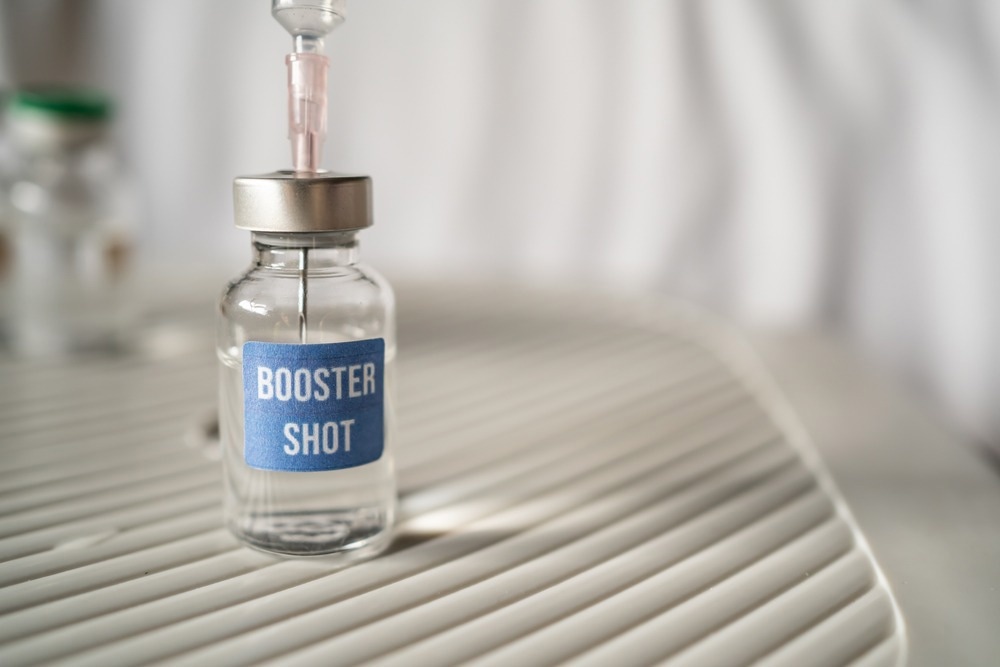In the Centers for Disease Control and Prevention’s Morbidity and Mortality Weekly Report (MMWR), researchers reported on the vaccine effectiveness (VE) of a bivalent vaccine booster administered after ≥2.0 doses of monovalent messenger ribonucleic acid (mRNA) vaccines against coronavirus disease 2019 (COVID-19)–related hospitalizations among adult individuals 65.0 years or older.
 Study: Early Estimates of Bivalent mRNA Vaccine Effectiveness in Preventing COVID-19–Associated Hospitalization Among Immunocompetent Adults Aged ≥65 Years — IVY Network, 18 States, September 8–November 30, 2022. Image Credit: Wachiwit/Shutterstock
Study: Early Estimates of Bivalent mRNA Vaccine Effectiveness in Preventing COVID-19–Associated Hospitalization Among Immunocompetent Adults Aged ≥65 Years — IVY Network, 18 States, September 8–November 30, 2022. Image Credit: Wachiwit/Shutterstock
Background
Monovalent severe acute respiratory syndrome coronavirus 2 (SARS-CoV-2) mRNA vaccines targeting the SARS-CoV-2 ancestral strain have successfully reduced COVID-19-associated health burdens across the globe. However, VE values against SARS-CoV-2 infection-related hospitalizations have reduced with time, probably due to waning humoral immunity and continually emerging SARS-CoV-2 Omicron variant sublineages with greater immune-evasiveness.
On 1 September 2022, the administration of bivalent mRNA COVID-19 vaccine booster doses, targeting spike (S) protein sequences of the ancestral strain and Omicron subvariant BA.4/5 was advocated by the advisory committee on immunization practices for individuals who completed prime vaccinations ≥2.0 months prior. Data on bivalent booster VE estimates against SARS-CoV-2 infection-related hospitalizations in the US (United States) are limited, especially among elders, who are most vulnerable to COVID-19 severity outcomes.
About the study
In the present test-negative case-control study, the IVY (investigating respiratory viruses in the acutely ill) network researchers assessed the mRNA bivalent booster VE administered after ≥2.0 monovalent COVID-19 mRNA vaccinations among individuals aged ≥65.0 years.
The study was conducted between 8 September and 30 November 2022 and comprised individuals hospitalized for SARS-CoV-2 infection–like illness at either of 22 IVY network registered-US hospitals across 18 states. COVID-19 diagnosis was based on the SARS-CoV-2 antigen testing or nucleic acid amplification testing reports. Individuals diagnosed with COVID-19 within 10 days of the onset of illness and within three days of hospitalization were allocated to the case patient group. Individuals with SARS-CoV-2-negative test results in the same period were allocated into the control group.
Upper respiratory tract samples were obtained and retested using RT-PCR (reverse transcription polymerase chain reaction) analysis for influenza virus and SARS-CoV-2 presence at the central laboratory (medical center of Vanderbilt university). Individuals who initially tested SARS-CoV-2-negative at local hospitals but were diagnosed with COVID-19 based on the central laboratory test reports were reallocated into the case-patient group.
The team excluded immunocompromised individuals, controls infected with the influenza virus, individuals who were administered the bivalent vaccine booster within a week prior to the onset of illness or within 2.0 months of their most recent monovalent vaccination, and individuals vaccinated with non-mRNA SARS-CoV-2 vaccines. Clinical and demographic information was obtained from patients’ (or proxy) interviews and participants’ EMR (electronic medical records) reviews.
The status of SARS-CoV-2 mRNA vaccinations was confirmed from EMRs, state registries, self-reports, or vaccination cards. The team estimated VE in absolute terms against SARS-CoV-2 infection–related hospital admission based on a comparison of the chances of bivalent vaccine booster receipt with none SARS-CoV-2 vaccinations between the two groups.
The team also estimated relative VE based on a comparison of the chances of bivalent vaccine booster receipt after ≥2.0 monovalent mRNA vaccinations between the two groups. Multivariable-type logistic regression modeling was used to estimate VE based on odds ratios adjusted for the US human services and health department region, admission dates in 14-day trials, sex, age, ethnicity, and race.
Results
In total, 1,168 individuals were initially identified, of which 370 ineligible individuals were excluded, and as a result, 798.0 (68.0%) individuals were considered for the final analysis, comprising 381 and 417 case-patients and controls, respectively. The median participant age was 76.0 years, and most (74%) suffered from ≥2.0 comorbidities. Eight percent (n=66) of participants had self-documented COVID-19 prior to the COVID-19-like illness experienced during the period of Omicron variant predominance between 26 December 2021 and 30 November 2022.
In the case patient group, 21% (n=81) were non-vaccinated, 73% (n=280) had been administered ≥2.0 monovalent mRNA vaccines, and 5.0% (n=20) had received the bivalent vaccine booster. Among controls, the corresponding percentages of individuals were 15%, 71%, and 14%, respectively. The median duration between bivalent vaccine booster receipt and the onset of COVID-19-like illness was 29.0 days.
Compared to non-vaccinated individuals, the VE of the bivalent vaccine booster administered after a week of the onset of illness (median value of 29.0 days) against SARS-CoV-2 infection-related hospital admission was 84.0%. In comparison with individuals who were recipients of ≥2.0 monovalent mRNA vaccines, the relative vaccine effectiveness of the bivalent vaccine booster was 73.0%.
The findings indicated that the bivalent vaccine booster conferred robust protection against SARS-CoV-2 infection-related hospital admission among older individuals and provided additional immune protection among those previously vaccinated with monovalent mRNA vaccines. Compared to individuals whose most recent monovalent mRNA vaccination was six months to 11.0 months and ≥1.0 years prior to the onset of illness, the relative VE estimates for the bivalent vaccine booster were 78.0% and 83.0%, respectively.
Conclusion
Overall, the study findings showed that the bivalent vaccine booster conferred 73.0% additional immune protection against SARS-CoV-2 infection-related hospitalizations compared to previous monovalent COVID-19 mRNA vaccinations among immunocompetent elder individuals.